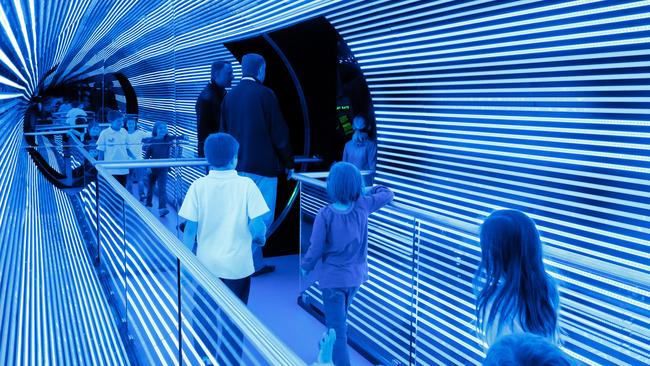Work insight is out of this world
Science Minister Karen Andrews says the local space industry is worth $3.9bn a year and can triple in size by 2030.

Few Australians may ever travel into space but their reliance on industry above Earth is already commonplace.
From telecommunications to GPS, satellites are big business and the potential seems as vast as near-space itself.
A vision of what the space industry is doing and what is to come will be on display for the first time at Avalon 2019, the biennial Australian International Airshow.
The Australian Space Agency will have its own stand and an inaugural space business conference will be held, focusing on what business opportunities exist in the heavens.
Federal Minister for Industry, Science and Technology Karen Andrews, whose portfolio covers the ASA, says the local space industry is already worth $3.9 billion a year to the economy, and employs about 10,000 people.
“The intention is to grow it by 2030 to an industry that’s effectively tripled in size — so worth $12bn to the economy with an additional 20,000 working in the sector,” Andrews says.
“The involvement in Avalon is so important because it is sending a very clear message to the rest of Australia and the world, that the space agency and the space industry in Australia is well and truly open for business.”
The self-confessed space enthusiast says the space agency’s Avalon exhibit will target young people in particular, with the help of Questacon: The National Science and Technology Centre.
“Knowing Questacon, I’m sure they’ll have a range of things to engage young people in particular,” Andrews says.
“The space agency will be able to leverage off that and say ‘well, here are the opportunities for you in space’.
“They have got a key role in making sure our young students understand that studying maths and science at school is very important to them.”
Despite its relative youth, Andrews says Australia’s space sector is benefiting from the country’s respected aviation industry, considered to be one of the safest in the world.
“It’s a sector that’s worth about $US353bn ($497bn) globally,” she says.
“So Australia has only got a very small percentage.
“Australia is uniquely placed geographically in the southern hemisphere, and we need to capitalise on that.”
Duncan Blake of the International Aerospace Law and Policy Group says that the work already being done in Australia with small satellites is extraordinary.
“There are now satellites being launched into space that allow farmers to check dam levels without having to go to the dam,” Blake says.
“These same devices can track cattle and check on feed. It’s very helpful in remote areas that are under-served by communications technology.”
Along with the University of Adelaide’s Law School, IALPG is in the process of setting up a website known as the Australian Navigational Guide Explaining Laws for Space (ANGELS) to assist businesses.
Blake says six outstanding students from Adelaide Law School have been chosen to help develop content for the site, which is due to go live later this year, following passing last year of the Space Activities Amendment (Launches and Returns) Act.
“The ANGELS project will work closely with the South Australian Space Industry Centre, as well as visiting six Australian cities, to meet with space start-ups to understand their regulatory needs,” Blake says.
The Australian Space Business Conference will begin at the Melbourne Convention and Exhibition Centre and move to Avalon Airport for its second day on Tuesday.
Presenters include representatives of the CSIRO, Lockheed Martin Space and the ASA.







To join the conversation, please log in. Don't have an account? Register
Join the conversation, you are commenting as Logout